What’s the Difference Between Largemouth Bass in Florida and the North?
Springtime is that time of year anglers get giddy with visible optimism oozing from their pores. It is a terrible time for us to play poker. Snow is a distant memory, plants turn lush green, and birds chirping frantically and beautifully. No angler doubts a new lunker is going to grace their mantle in the immediate future. Unfortunately, largemouth bass do not intend to be that easy.
Regardless of where you live, the bite before the legendary pre-spawn time is not always fruitful. Few know this better than fishing guide and B.A.S.S. Open veteran Destin DeMarion. Around New Year’s, DeMarion leaves his home in Pennsylvania and heads to Florida. Here he is a full time fishing guide on Florida’s rivers and lakes before returning home in early May. This puts him in the thick of spring fishing for over five months in dramatically different parts of the country!
So what’s the difference between largemouth bass in Florida and the North? Today DeMarion is going to help us break it down.
Catching Late Winter Largemouth Bass Up North
On Northern waters, DeMarion insists largemouth bass begin biting just as the ice melts, but finding them is no easy task. He suggests, “Begin fishing in popular ice fishing areas. The bass are eating the same panfish the ice anglers were after, and they did not disappear with the ice.” Fish that wintered here typically stay for several weeks before heading for shallow, pre-spawn areas.

Fish are cold blooded, thus the colder states have a shorter growing season. Once the ice is gone, largemouth bass waste no time filling their bellies. Contrary to what many believe, largemouth eat in cold water, but are less willing to chase food because their metabolism remains low. So putting bait in front of them is important, and DeMarion suggests a blade bait, “A blade is a great vertical presentation for bass.” He explains, “It puts the bait right in front of their faces, which does not require them to burn calories chasing.” The ½-ounce Binsky by Fish Sense Lures in color schemes gold and sexy shad are his favorite.
DeMarion also keeps a ½-ounce lipless crankbait and jerkbait closeby. He claims, “A blade bait is great, but I also catch a lot of fish with traps (lipless crankbaits) and jerkbaits when the water is still in the 30’s.” The trap is especially productive in areas with weeds. “With weeds around, I am looking for a reaction bite with the trap. I use a steady retrieve, but when it is stuck in the weeds, I snap my rod sharply to break it loose. When that happens, often times a bass will react and eat it.”
Water temperature dictates how he retrieves a jerkbait, “The colder the water, the slower and longer the pauses. As it gets closer to spawn and the water creeps into the upper 40’s and low 50’s, I like an erratic cadence with brief pauses to illicit reaction strikes.”
“When the water begins to warm up, when spring is finally here to stay, you can follow the bass into their transition, pre-spawn areas,” DeMarion insists. “Now is the time to focus on dark bottoms. This is key. Water with a dark bottom composition warms up fastest and holds the heat.” Look for darker areas in bays, canals, and feeder creeks. “I have seen it 10 degrees warmer than other areas on the lake.” The warmer water puts fish in a more aggressive mood.
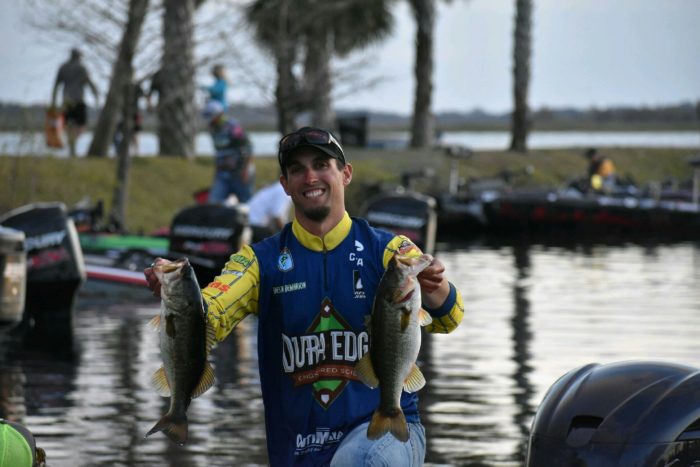
Pre-Spawn Largemouth Bass in Florida
“Water temperature is extremely important in the spring no matter where you are,” DeMarion began explaining, “but it is most important in Florida.” Spring cold fronts in Florida are notoriously bad for anglers. “I can’t exactly explain why, but they completely shut down in cold fronts. They’ll just bury themselves in the hydrilla and remain dormant. I’ve literally poked them with the tip of my rod, and they don’t move!” Ideal water temperature in Florida is anything above 60 degrees.

Many characteristics make Florida fishing unique, but DeMarion focuses on two during the spring months:
1. “Something to keep in mind, and what makes Florida fishing unique, is the bass will spawn for many months,” confesses DeMarion. They begin in December and go through April. Not all fish spawn at the same time. Different waves of fish come and go during these months.
2. Most natural lakes in Florida lack significant contour changes. “Most of the lakes here are shaped like big bowls without a significant breakline,” DeMarion explains. Early in the season subtle changes in depth are key. Subtle may be a change in depth of just 6 or 12 inches.
He adds, “The bass will stage on any structure out in front of spawning areas, especially emergent weeds, but they will also use shell bars.” Anglers can pluck pre-spawn bass by targeting this structure with the same baits as up north, excluding the Binsky. Instead he adds chatterbaits, big 10 inch Texas rigged worms, and Carolina rigs to his arsenal.
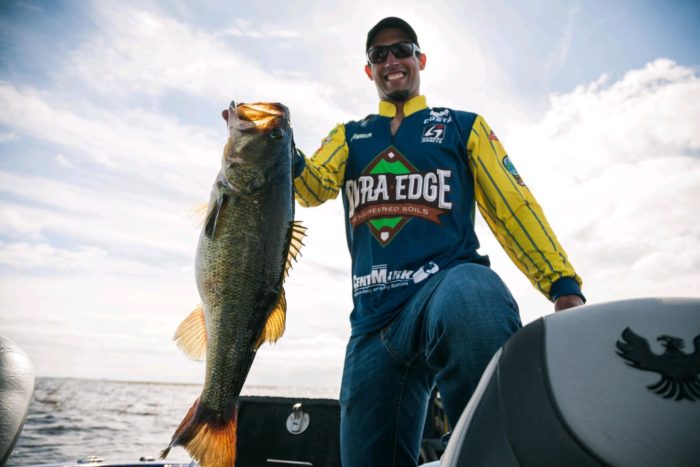
Springtime means BIG BASS time, and following the advice of Destin DeMarion will help you boat more bass. But it is also time to ensure your boat is ready to endure the rigors on the water. Megaware offers protective products needed to care for your boat this season. Make sure you’re outfitted with it all. Find them on their website or at your local major retailer.

Andrew Buss
Andrew Buss resides with his family in the great state of Indiana. When he’s not fishing, creating YouTube videos or running the R&B Bass Circuit, he poses as a school teacher. If you’d like to see more from the #hunteroffish check out his social media channels.
DID YOU ALSO SEE?
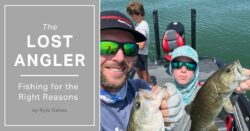
Fishing For The Right Reasons

Fishing as a Co-Angler: Benefits, Challenges, and Techniques
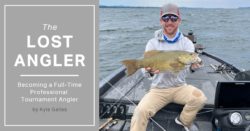


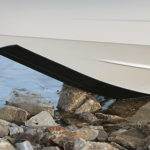

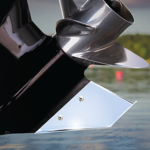

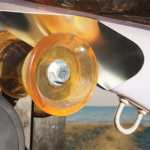
Comments